Averting Disaster - A Guide To Computer Backups (2014)
by Brett Howse on May 21, 2014 9:00 AM EST- Posted in
- IT Computing
- Mac
- Apple
- Windows
- Cloud Computing
- macOS
Built-in Backup Tools - OS X
Apple introduced Time Machine back with the Leopard release in 2007. Time Machine is an all-in-one built-in backup utility, allowing both file and image level backups with versioning. Time Machine will back up to internal or external disks, as well as the AirPort Time Capsule which is Apple’s own NAS specifically for backups. You can also back up to another Mac running at least Leopard, and with Mountain Lion Apple added the ability to backup to multiple destinations, with the backups alternating among the backup targets to provide additional levels of redundancy. Officially, Time Machine is not supported on other NAS devices. It does not work natively with Server Message Block (SMB) or Network File System (NFS) shares but instead requires the Apple Filing Protocol (AFP). If you are not going to use an AirPort device, ensure the NAS you select specifically supports Time Machine. Time Machine is simple to use, and yet powerful enough to be an almost complete backup solution for the Mac. Let’s look at how to set it up:
- First you need to configure a backup disk. Ensure you have your backup disk connected, or your AirPort Time Capsule configured, and then open the Time Machine menu from the menu bar by clicking the Time Machine icon and choosing Open Time Machine Preferences…
- On the Time Machine menu, click Select Backup Disk…
- Here it will display the available backup targets. Choose the backup target you’d like to use, whether it is an attached hard disk or the AirPort Time Capsule and click Use Disk. If the hard disk is not formatted with HFS+, you will be prompted to erase the disk and reformat which will of course delete any data currently on the backup target.
- Now that you’ve selected a disk, Time Machine will automatically start backing up.
Time Machine does a full backup of your system, and then it starts to back up every hour. If the backup target is unavailable it will delay the backup until it is available again. Because only changes are backed up, each successive backup is relatively quick. If you would like to exclude some files from being backed up, click the Options button in the Time Machine menu to add exclusions.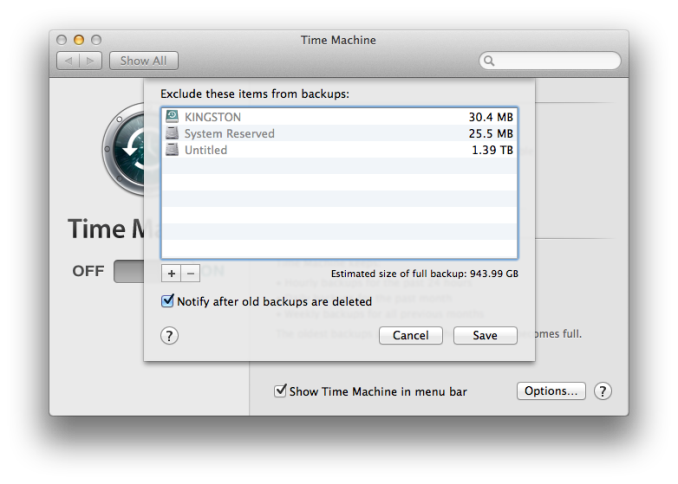
Other advanced options are not available, so there is no way to increase or decrease the frequency of backups or specify how many versions of a file to keep. The program will just back up indefinitely until it fills the available backup target, at which point it begins to delete the oldest files first.
Restoring files is relatively easy as well:
- Navigate to the folder where the file you want to recover should be (example – Documents).
- Click on the Time Machine icon in the menu bar and choose Enter Time Machine.
- This will open the restore interface, which shows a list of all of the previous backups sequentially. Using the arrows allows you to move from one backup to the next, or you can utilize the date bar on the right side which will allow you to move back to a known date. Selecting a backup date will then display the folder exactly as it was during the backup.
- Once you’ve located the file you wish to restore, select the file, and then click Restore. If the file was deleted, it will just be restored, but if the file still exists in its original location, you will be prompted to overwrite the file.
Time Machine can also be used within certain programs such as contacts, and restores operate in the same manner as files.
To restore the entire system to a previous state, hold down the Command and R keys at startup to enter the Recovery mode. In Recovery mode, one of the options is to restore from a Time Machine backup.


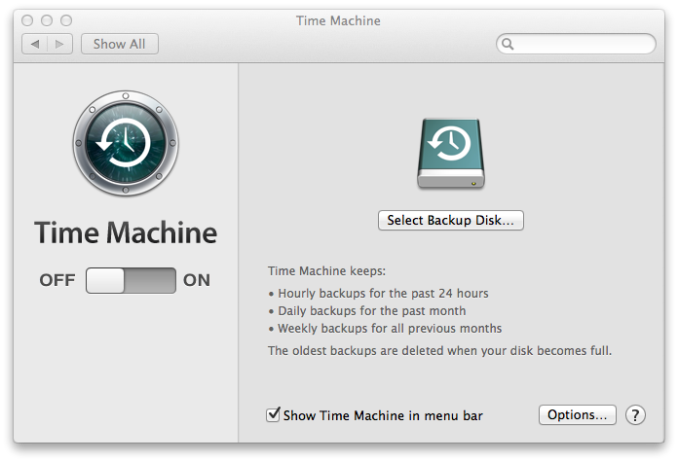
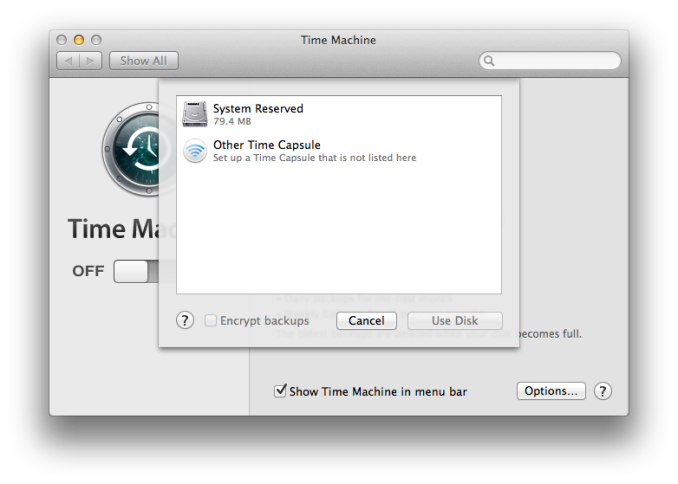
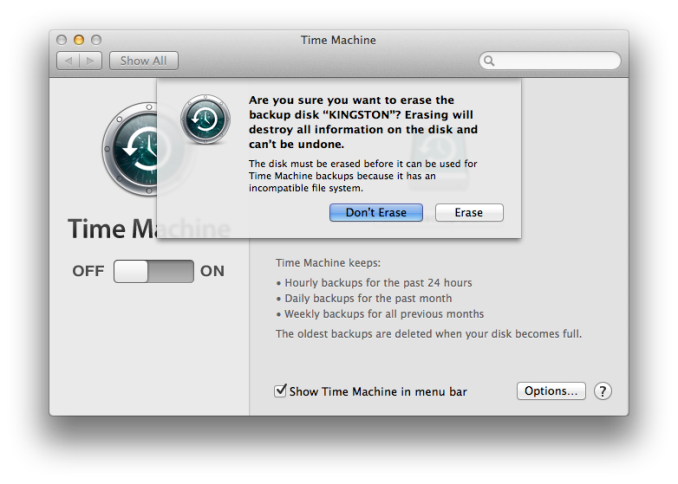






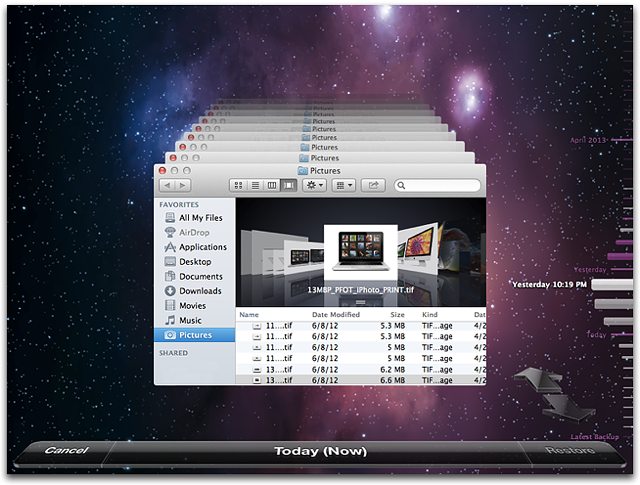








133 Comments
View All Comments
patrickjchase - Thursday, May 22, 2014 - link
ZFS RAIDZ implements strong checksums within each drive, such that it can reliably detect if a drive is returning bad data and ignore it. In some respects it's actually stronger than RAID6 in terms of its ability to deal with silent corruption. That's why NonSequitor wrote "double parity OR checkums" (RAID6 is double-parity, RAIDZ is single-parity augmented with strong per-disk, per-chunk checksums).If you're halfway competent then it's not "extremely likely" that you'll encounter unreadable sectors during a RAID5 rebuild. There's a reason why both good RAID controllers and ZFS implement scrubbing (i.e. they can periodically read every disk end to end and remap any unreadable sectors). If you do that every couple days then the likelihood of encountering a new (since the last scrub) unreadable sector may or may not be high depending on your rebuild time.
For example I have a 5-disk RAID5 array that I use for "cold" storage. I scrub it daily, and rebuilding to a hot-spare takes 6 hours (I've tested it several times, verifying the results against separate copies of the same files), which means that the maximum delay between the most recent scrub and the end of a rebuild is 30 hrs. The scrubs have only found one bad sector in ~2 years, so I respectfully submit that the likelihood of an additional failure within 30 hours of a scrub is pretty darned low.
beginner99 - Thursday, May 22, 2014 - link
exactly. anything above 2 TB drives becomes really problematic in this regard. With 4 TB drives it's almost guaranteed a RAID-5 rebuild will fail. IMHO if you do RAID, do RAID-1.patrickjchase - Thursday, May 22, 2014 - link
RAID1 has exactly the same problems as RAID5 - In the case of silent corruption it can't determine which disk is bad, and it's vulnerable to a single disk failure during a rebuild. The likelihood of such a failure is obviously lower (now you only have to worry about 1 other disks instead of 2 or more) but not hugely so. RAID6/RAIDZ2 is statistically much better until you get up to really high drive counts.The "big boys" with truly mission-critical data do N-way replication, i.e. all critical data is replicated (n>=3) times on different systems.
jimhsu - Wednesday, May 21, 2014 - link
+1 to crashplan. For my most important data, I have n+2 backups: n being the number of computers I have (meaning that Onedrive automatically syncs them); 2 being a crashplan online subscription as well as a local crashplan backup. I also have restore previous versions running, and use it on occasion, but don't consider it a backup per se.pjcamp - Wednesday, May 21, 2014 - link
I plowed through all the competitors a few years ago, and Crashplan was the one I selected. It had the cheapest unlimited storage with version history, and the (for me) killer feature that there exists a Linux client. I have a FreeNAS box that I use for media storage. I can mount it as a drive on my Linux machine and the Crashplan client will back it up just as if it were a local drive. There is also an Android client that gives you access to all your files, functioning as a sort of personal Dropbox, without sharing but with better security.I've had occasion to use my backups a couple of times and found it easy and speedy, much more so than I expected for a cloud service.
cknobman - Wednesday, May 21, 2014 - link
Everything in my house goes to a personally built server onto dedicated RAID storage drives. No accounts other than my personal administrator account have access to do anything but read.Those drives are then backed up to the cloud via CrashPlan.
Simple, effective, and as foolproof as I can get for now.
uhuznaa - Wednesday, May 21, 2014 - link
One thing to note with Time Machine: You don't need to use the fancy interface for restoring files. Just browse your backup disk with the Finder (or on the command line), there's a directory for every backup from which you can just copy things over.To CrashPan: I used that for a while, but found it to be utterly uncontrollable. The log files are a joke, the status mails arrive at random times (or not at all) and are useless ("Files: 117k, Backed Up: 99.9%") and often enough when a backup didn't run for some reason it's impossible to debug because there's no real error reporting. It may work somehow, but it has all the marks of something I don't want to rely on.
NCM - Wednesday, May 21, 2014 - link
Yes, that's indeed a big point for Apple's TimeMachine — that and it being included free with every Mac. If necessary you can just go digging into a TM archive and pull out what you need.SkateboardP - Wednesday, May 21, 2014 - link
Hi Brett,great guide but can you or others please check if the OneDrive backupsolution is throttled and capped at 355kb/s under win8.1 (Desktop)? I read that many people complaining about that. Thanks.
plext0r - Wednesday, May 21, 2014 - link
I've been using Duplicati for a few years and it has been good. "It works with Amazon S3, Windows Live SkyDrive, Google Drive (Google Docs), Rackspace Cloud Files or WebDAV, SSH, FTP (and many more)." It uses rsync under the covers and I use it to backup to my RAID-5 NAS in the basement. I also perform offsite backups (rotate 1TB disks to and from my workplace).